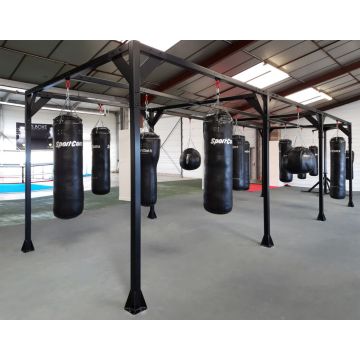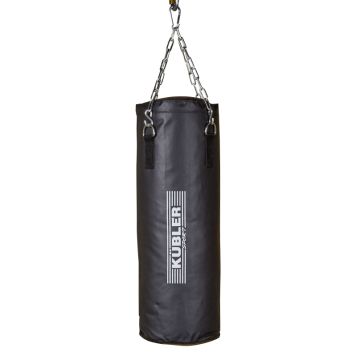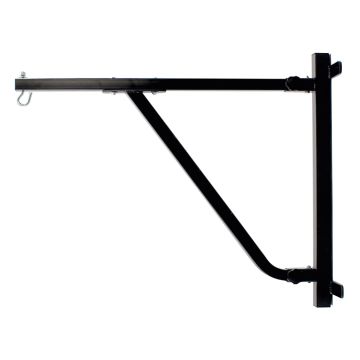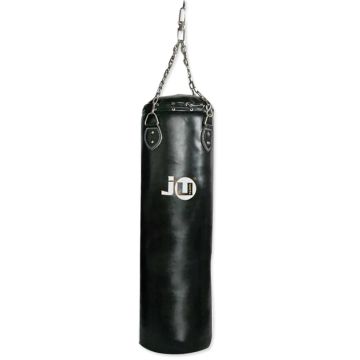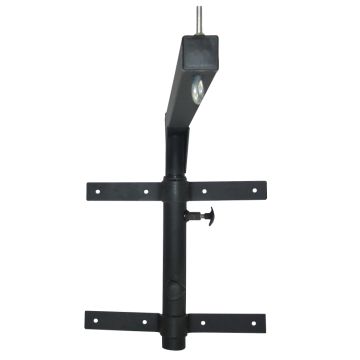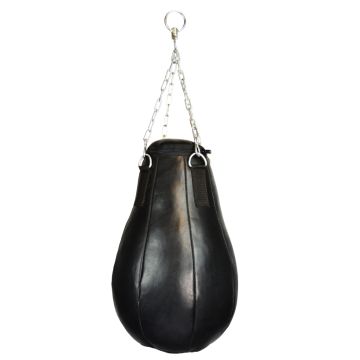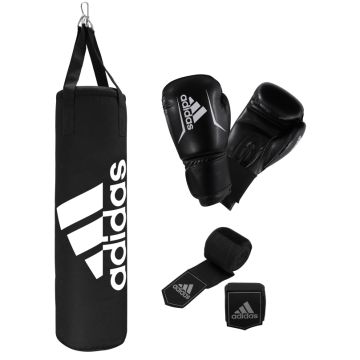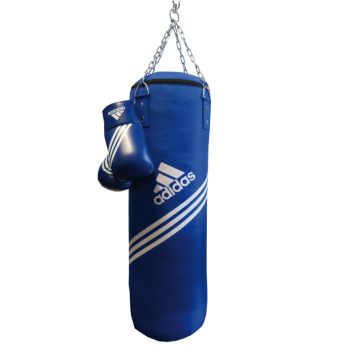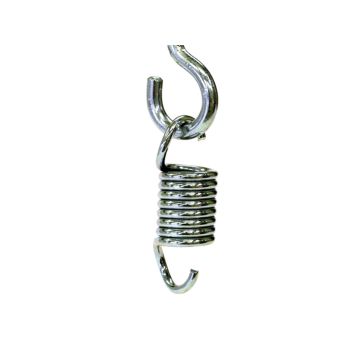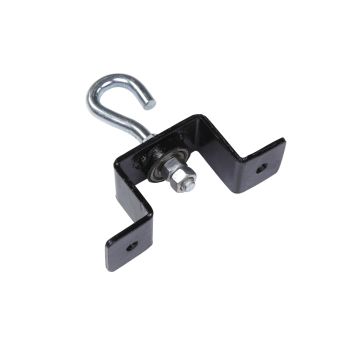Punching Bags
Buy high-quality & robust punching bags for every martial artist
Boxing - the versatile sport
A punching bag can be found in many areas. For example, the sack is an integral part of strength training and general fitness training or is used at home to reduce aggression. Boxing on a punching bag is a martial art and strengthens self-confidence, self-confidence and leads to the ability to keep a cool head in stressful situations. When boxing, you can relax and really work out. In addition, you can learn the special punching techniques and combinations of boxing sports on punching bags. Because the punching bag can also handle bad hits or kicks.
What different punching bags are there?
There are different variants or types of punching bags, which are also used differently depending on the type of their suspension and their shape:
- Free hanging punching bag: The classic design of a punching bag is hanging and swinging freely under the ceiling or wall. With this construction, you have a lot of freedom of movement because you can move freely around the hanging punching bag without any problems. This sack has a long shape and is either filled with sand or with material residues. With this sack you can very well perform a muscle training, as well as exercises on punching techniques (punch training) and kicking techniques, making this sack an optimal training device for training.
- Standing punching bag: As the name suggests, standing punching bags are on a stand. In comparison to the classic hanging punching bags, the standing punching bags have the advantage that they can be set up anywhere and in a mobile and flexible manner. These bags can have a long or pear-like shape.
- Inflatable punching bag: If you are looking for a variant for children & beginners, then you are perfectly advised with the inflatable punching bag. This is air-filled at the top and provided with a stand. The punching bag is much softer due to the air filling. Due to the soft properties, you can use the punching bag as a training device even during intensive boxing training with many punches (punch training). The base of this punching bag is filled with water or sand. Filling with water is sufficient for children, but sand filling should be used for adults and adolescents.
The special types of punching bags
In addition to the classic punching bags, there are also special shapes on bags: the dummy and the speedball. The boxing dummy looks like a human body and is suitable for realistic boxing training. A box dummy, like the standing punching bag, is attached to a stand and also does not require any suspension from the ceiling. The Speedball is also called hanging puching ball. This punching ball has a pear shape and can be used used to promote punch and speed. The Speedball must be hung from the ceiling. A double end ball is another "special" type of punching bag. The double-end ball is a boxing ball suspended on two ropes, which is ideal for training your own striking technique, reflexes and endurance. This training device is suitable for beginners and advanced boxers. There is also the boxing pear as another type of sack. A boxing pear enables you to train and improve fast striking techniques and at the same time increases concentration. It can be mounted on the wall, ceiling or at a boxing station. As the name suggests, the shape of the punching pear is pear-shaped or stair-shaped and not cylindrical in shape like a normal punching bag.
Which filling is right for me?
A punching bag can consist of sand (sandbag), fabric remnants or rubber granulate or plastic granulate or can be filled with these materials. A distinction is made between a hard and a soft filling. A hard filling is almost always a filling material consisting of sand (sandbag). A softer filling usually consists of the filling material made of textiles or rubber or plastic granulate. The disadvantage of textiles is that this material can sag down in the punching bag over time, reducing the density. This creates a clear advantage for filling with rubber, a plastic granulate or with a sandbag, since this behavior does not develop so quickly. A punching bag can of course also be filled with foam, which gives it very soft properties.
What are the differences in the material of the surface or the outer skin of punching bags?
A punching bag can have a skin or outer skin made of leather, synthetic leather or vinyl. The classic punching bag made of genuine leather is ideal for intensive training because leather is very durable and resilient. The leather punching bag is the best choice for kickboxing, as it can withstand the kicks during training. A disadvantage of punching bags with an outer skin made of leather is that these bags require intensive care. For this reason, a skin or surface made of synthetic leather is a good alternative. This material is also very resilient and only needs to be wiped off with a damp cloth after boxing training.
Are there differences in the weight of the punching bags?
The weight and size of a punching bag should be based on the body size of the trainee and his level of performance. For beginners or a simple workout, we recommend larger punching bags, such as those measuring 80 x 90 cm. Because with this sack the face is larger (longer length), which means that the boxer can hit the punching bag more easily. Lighter punching bags should be chosen for a beginner, children or for non-intensive training units (e.g. a weight of the bag from 80 to 110 kg). A heavy punching bag (e.g. 140 kg) is ideal for training experienced boxers. A bag with such a weight is very robust and can withstand all punches and punching techniques. Punching bags with a low weight (less than 30 kg) can be used for cardio units or light punching exercises. With regard to the suspension, it is recommended to attach the punching bag at a height of 1.70 meters. Because then this bag can be used by a particularly large number and also different athletes. An unfilled sack is best transported.
Accessories for punching bags
We particularly recommend buying suitable accessories for attaching punching bags. In our shop we have the following high quality accessories for your punching bag:
- Ceiling hooks
- Wall bracket (can also be folded sideways)
- Special ceiling fixings or fixings for the wall
- Sandbag suspension spring
In addition, you should never train without boxing gloves or boxing bandages. Because boxing gloves or boxing bandages protect hands or feet when training from kicking techniques against injuries, such as abrasions. You should also wear boxing bandages or boxing gloves when the sack is softly filled (e.g. foam). Finally, we have a little tip for buying a punching bag: the fewer seams a punching bag has, the higher quality and better the training device. In addition, the quality of the sack improves with double seams in the area of the hanging bracket!

